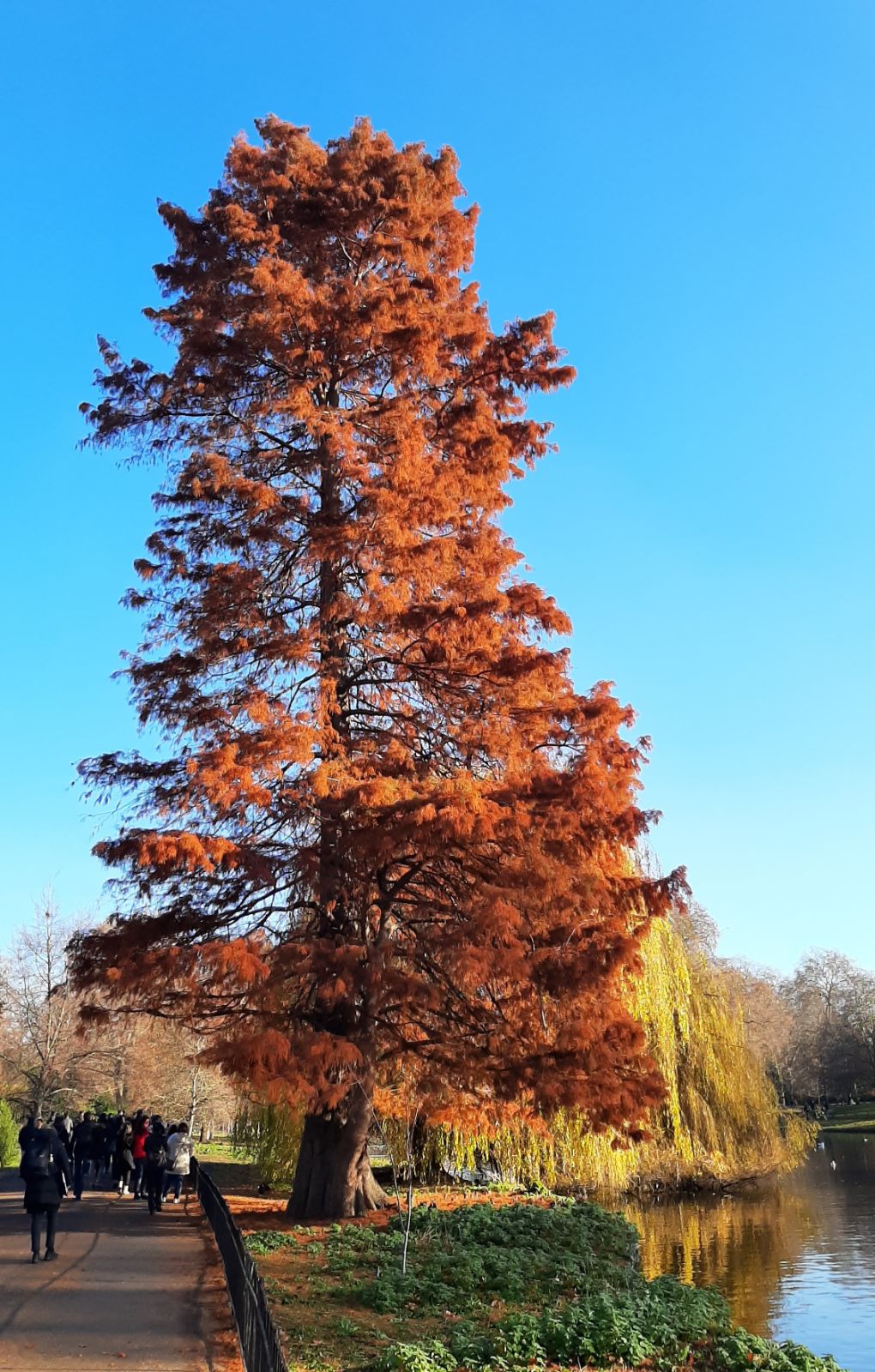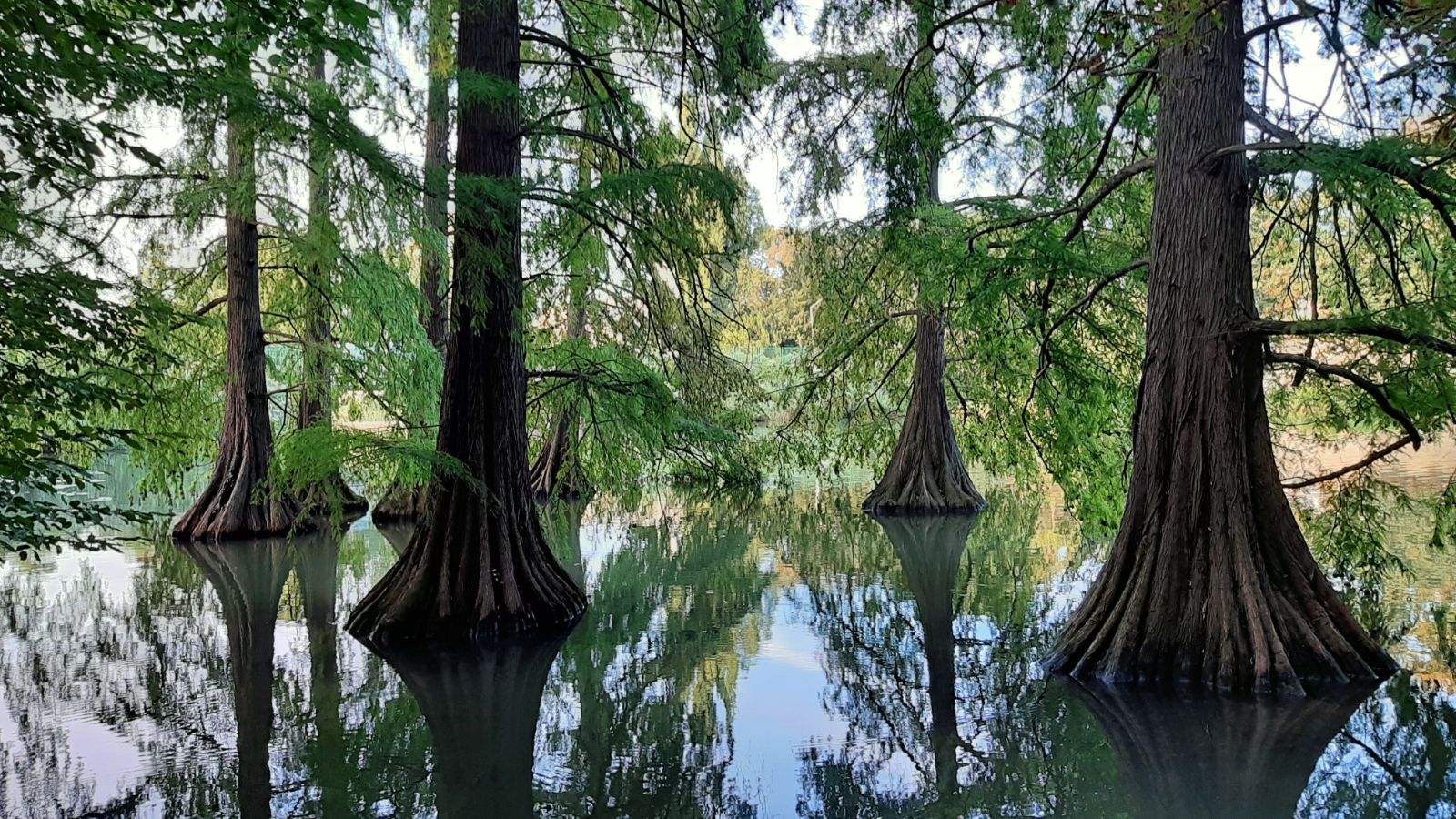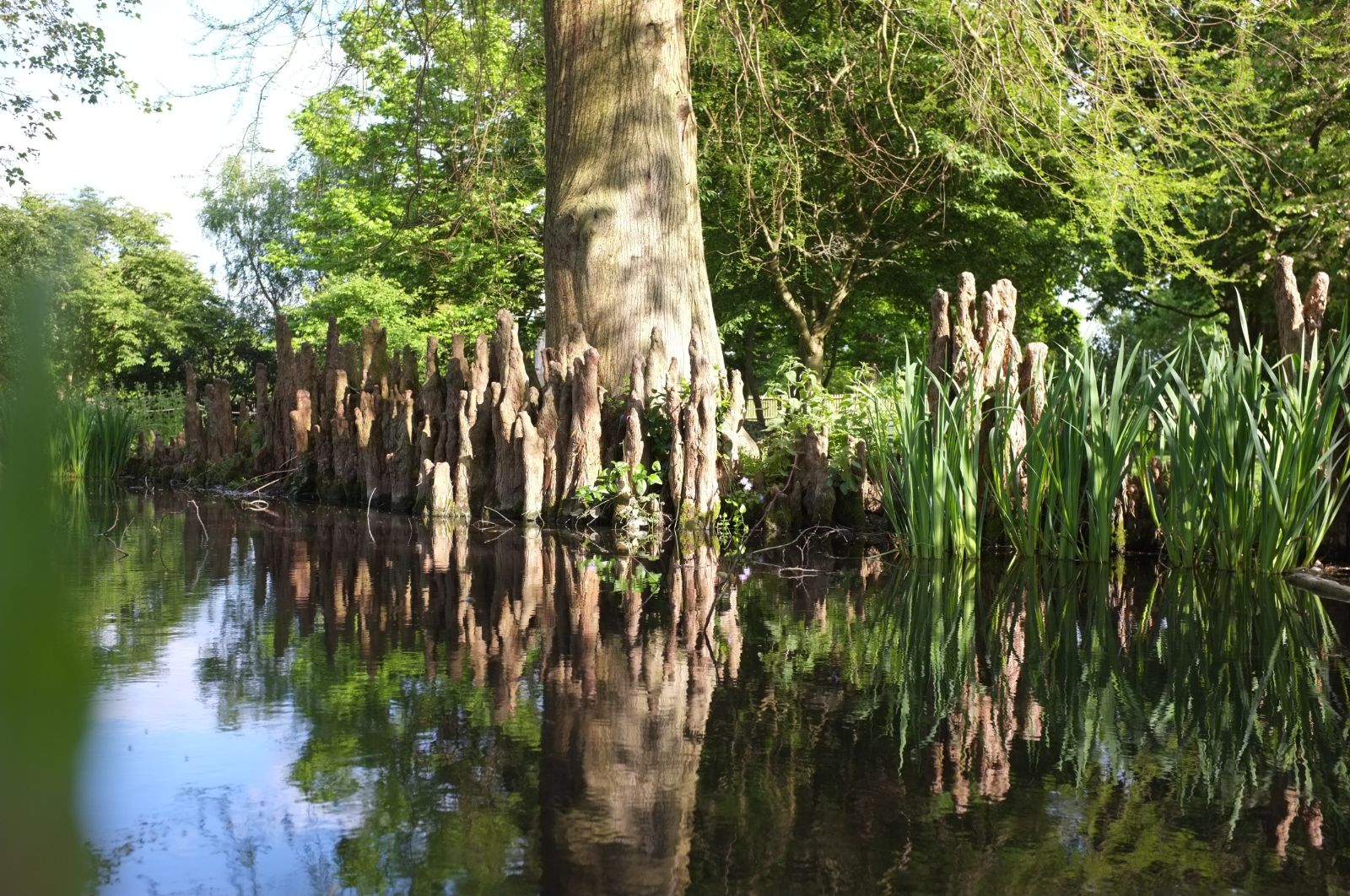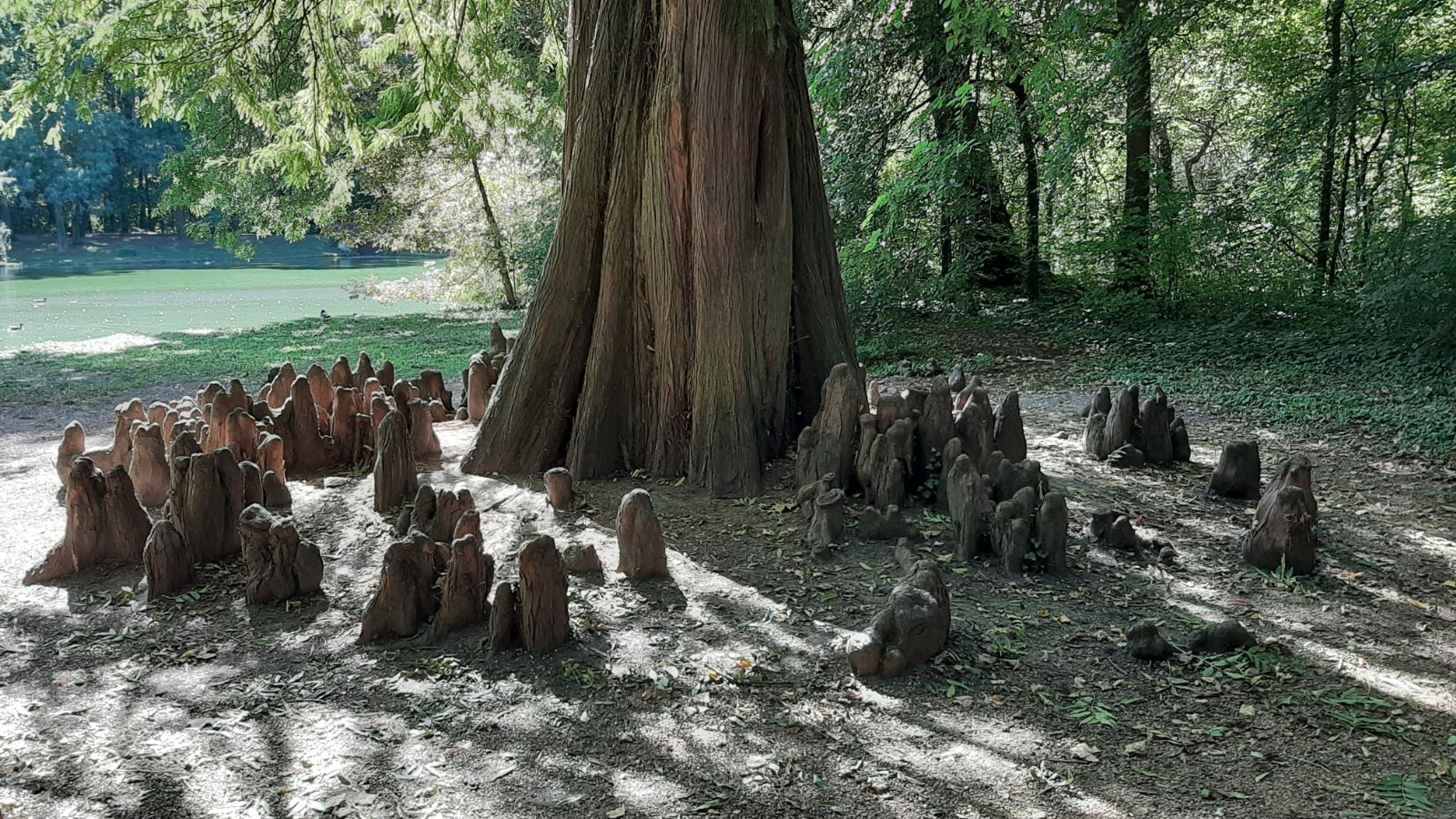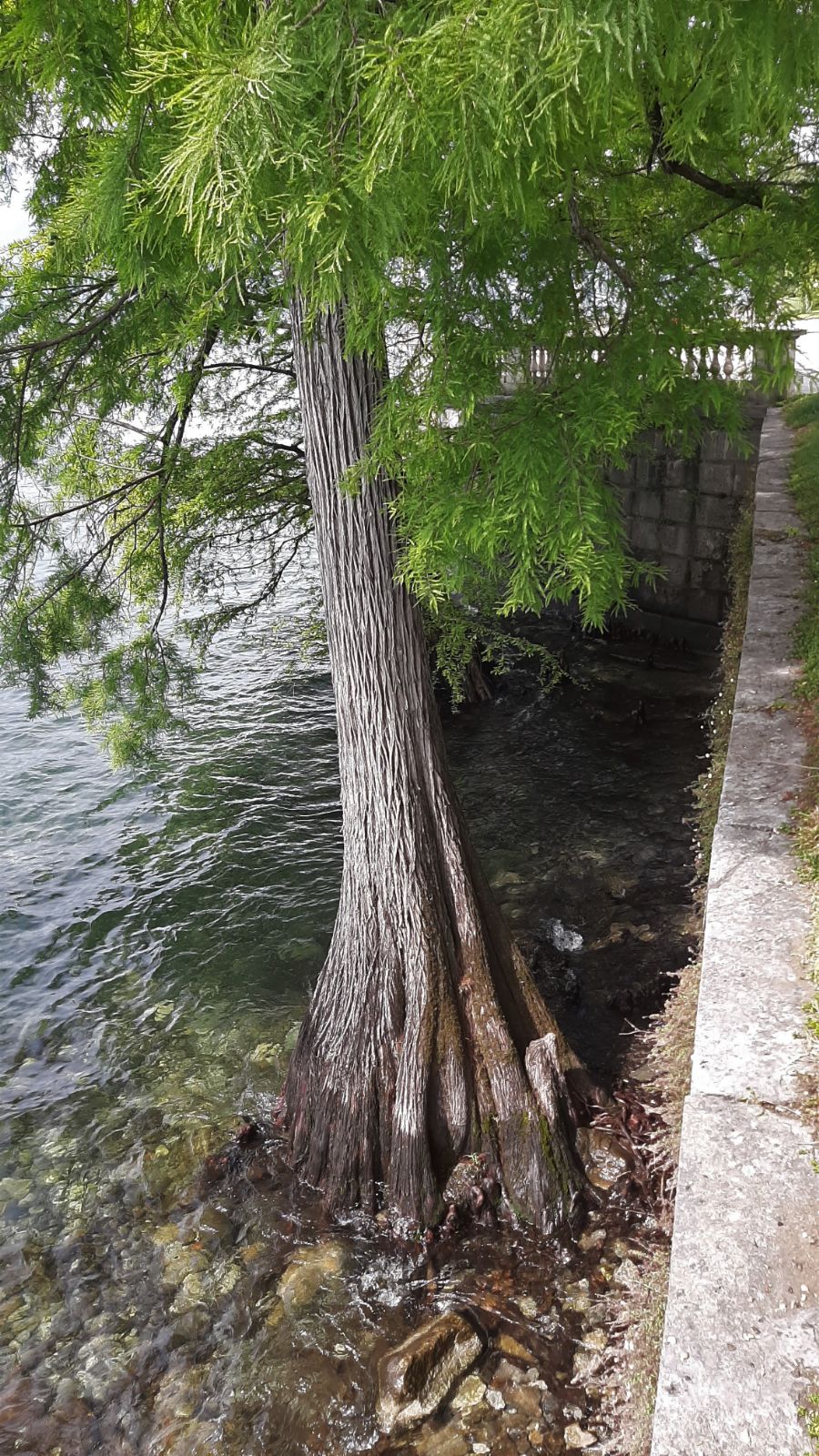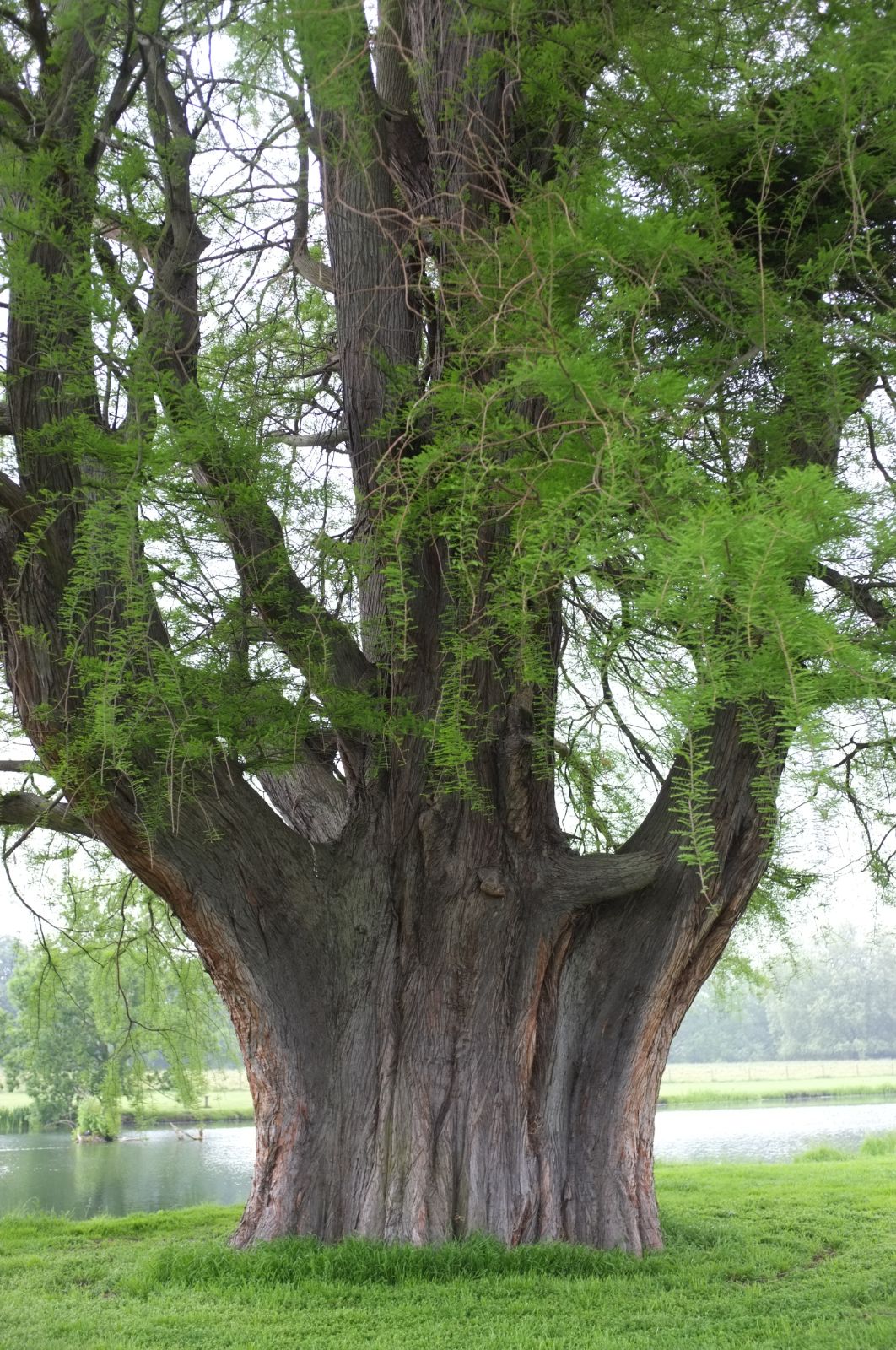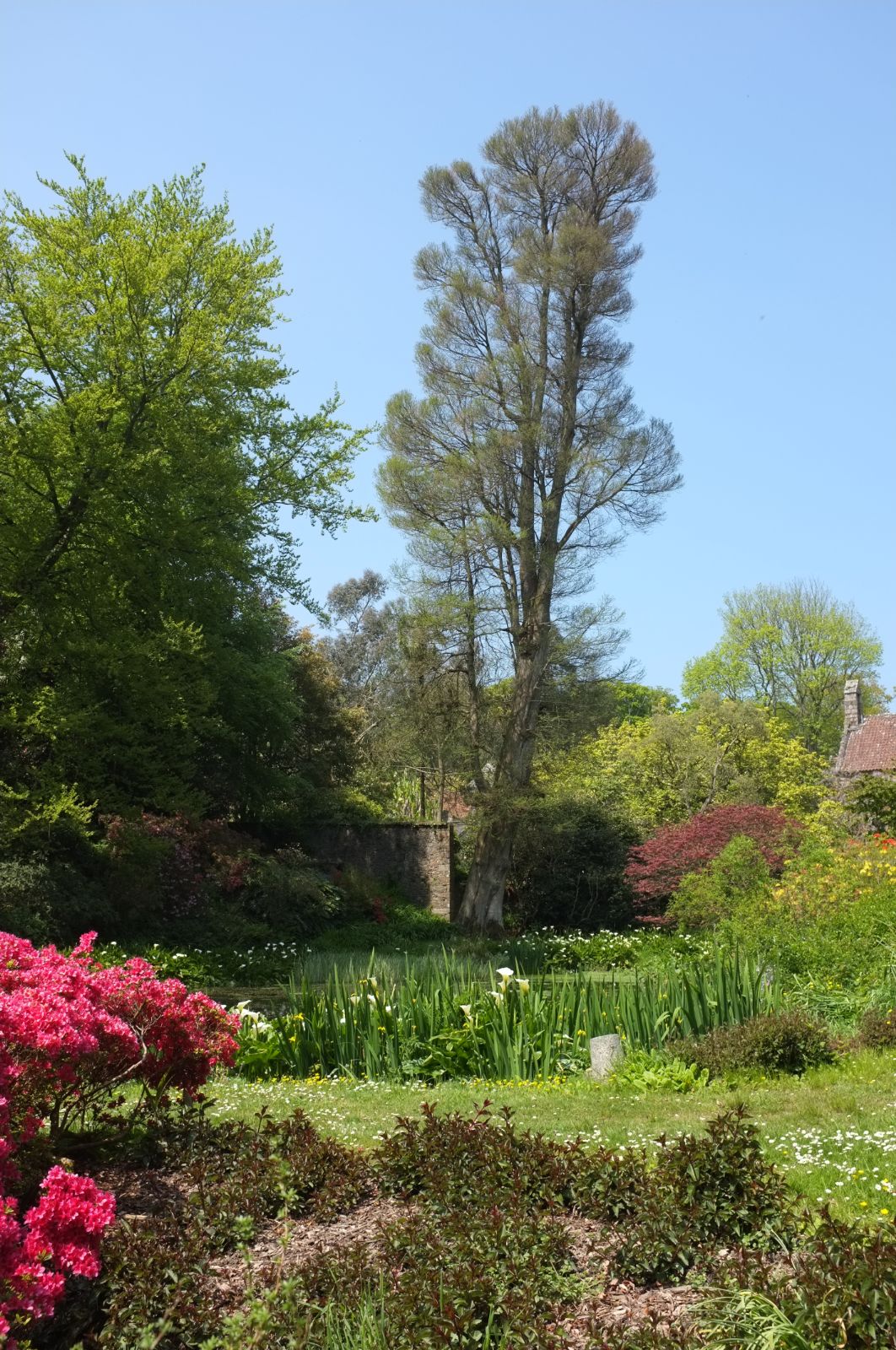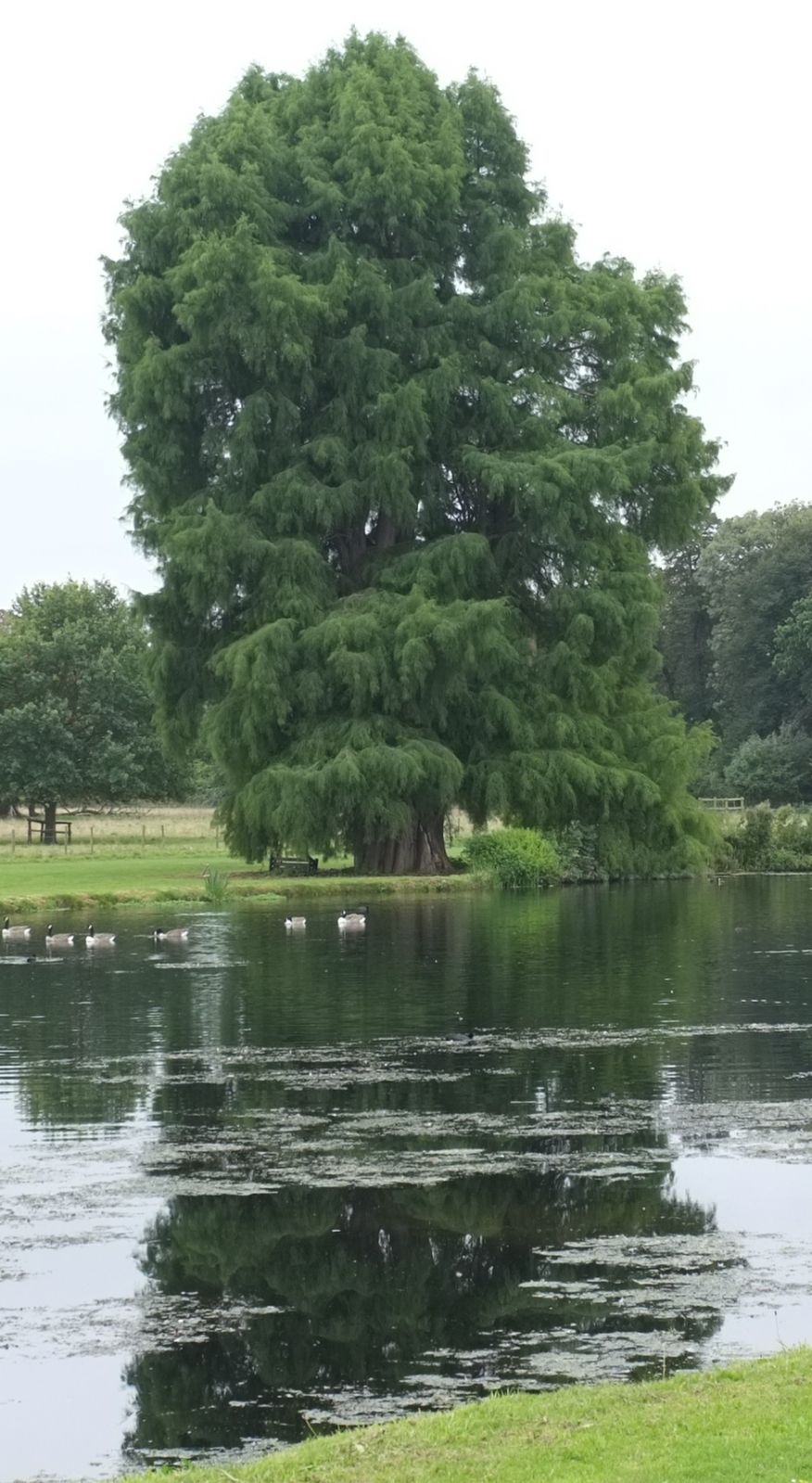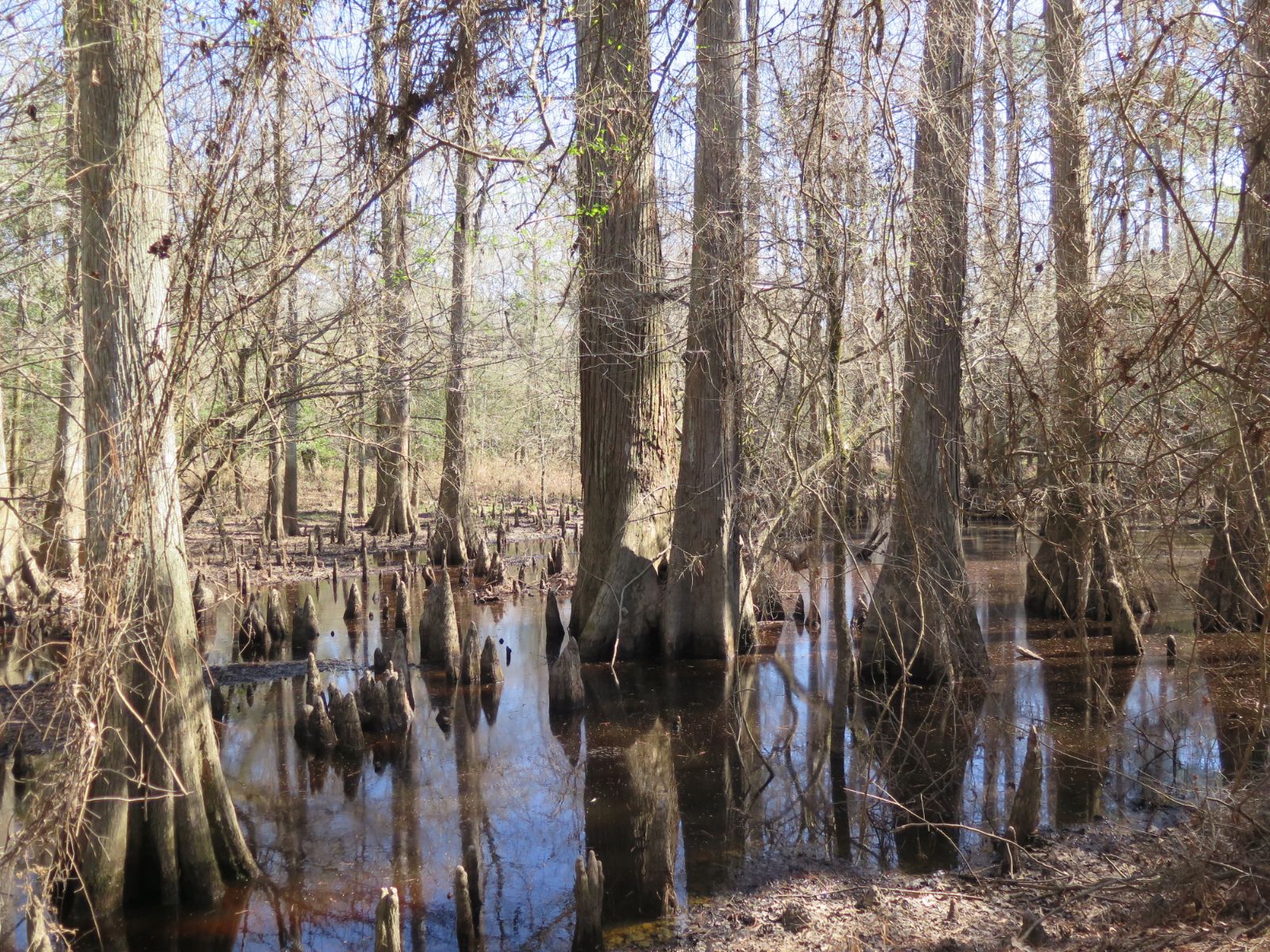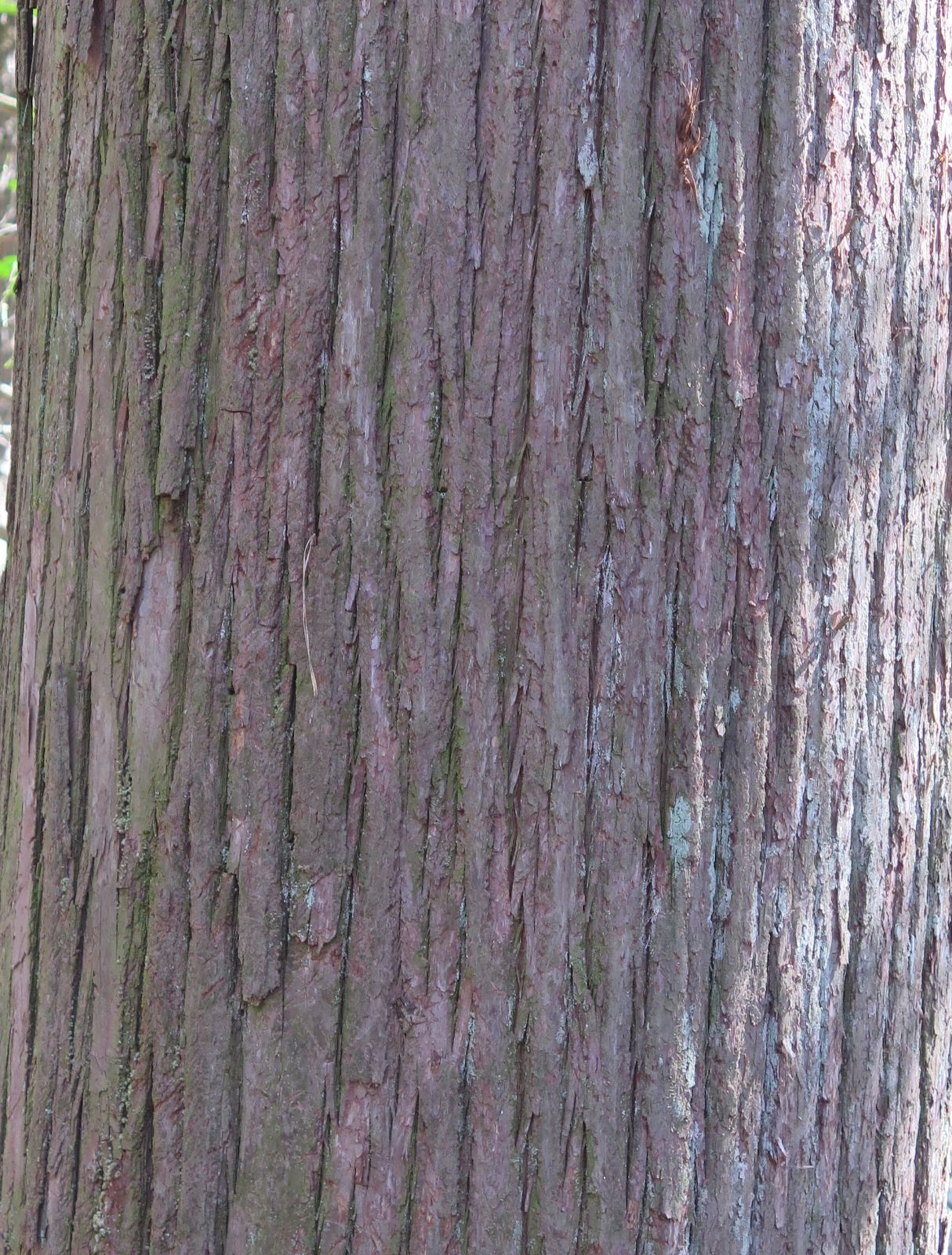Taxodium distichum
Sponsor
Kindly sponsored by
This genus has been sponsored and new text is being prepared.
Credits
Article from Bean's Trees and Shrubs Hardy in the British Isles
Recommended citation
'Taxodium distichum' from the website Trees and Shrubs Online (treesandshrubsonline.
A deciduous, usually pyramidal tree, 100 to 150 ft high, the tapered trunk erect, buttressed at the base, and measuring above it 4 to 6 ft in diameter. In damp situations the roots produce curious woody protuberances, which occasionally stand up several feet out of the ground, being several inches thick, and hollow. The young shoots are of two kinds: (1) the leading ones, which are persistent and have the leaves spirally arranged; (2) the others, very slender, annual, and falling away in autumn along with the leaves; this latter kind of shoot has no buds. Leaves spirally attached, but spreading (except in the leading shoots) in two opposite horizontal rows; linear, pointed, 3⁄8 to 5⁄8 in. long, 1⁄16 to 1⁄12 in. wide, of a soft yellowish green. Male and female flowers separate, but on the same tree; the former in slender panicles 4 or 5 in. long. Cones globular, 3⁄4 to 11⁄2 in. wide.
Native of the United States, from S. Delaware to Florida, west to Texas, and extending northwards in the Mississippi valley to about 37° N. Most of the stands occur at less than 100 ft above sea-level, where the base of the bole is submerged during a portion of the year. Here it is at an advantage over competing trees that lack its ability to grow under such conditions, though experiment has shown that it actually grows best on soils that are merely moist and deep.
The swamp cypress was introduced to Britain by John Tradescant (d. 1638), as recorded by his friend John Parkinson in the Theatrum Botanicum (1640), but the oldest trees of known date are those that grow at Syon House, planted a century or so later.
This tree is one of the most beautiful and interesting that can be grown in wet places, but it thrives well in ordinary soil. Its fine feathery foliage, of the tenderest green in spring, and dying off a rich brown in autumn, has nothing similar to it in the whole range of hardy trees. It is perfectly hardy, and thrives well in Britain, despite the coolness of our summers. The largest specimens are nearly all south of the Severn-Wash line and mostly grow near water or on alluvial soils. It is also very accommodating. A dry hollow at Kew, in which a deciduous cypress was growing, was turned into a lily pond in 1896 by puddling over with clay. The tree was left standing, and its trunk became permanently immersed in 2 or 3 ft of water. The tree showed no ill effects from this sudden and drastic change in its root conditions, but on the contrary grew much better for it. The only visible effect was that the immersed part of the trunk became soft and spongy.
The ‘knees’ produced by the roots of the deciduous cypress are often known as pneumatophores – a term coined at a time when it was believed that they serve to supply air to the roots when these are immersed in water. But research in the United States has shown that their removal makes no difference to the health of the tree. In cultivation they are produced only by trees growing by still or running water, and then not always.
Seed is the usual means of increase when commercial quantities are needed, but cuttings taken from extension growths in late summer root quite easily.
The following are some of the notable specimens recorded in recent years: Syon House, London, three trees pl. c. 1750, Duke’s Walk, 105 × 13 ft (1976), south side of Lake, 96 × 141⁄2 ft at 4 ft (1967), Park, 90 × 141⁄2 ft (1967); Dulwich Art Gallery, London, 85 × 101⁄4 ft (1976), very fine; Dulwich, Ash Cottage, 98 × 11 ft (1976); Knap Hill Nursery, Surrey, 97 × 111⁄4 ft (1974); Burwood Park, Walton-on-Thames, Surrey, 115 × 181⁄4 ft (1973); Brockett Park, Herts, eighteen trees by the River Lee, the best 105 × 121⁄2 ft and 77 × 14 ft (1976), cf. 86 × 9 ft and 80 × 10 ft, the best measured by Elwes in about 1904; Broadlands, Romsey, Hants, 118 × 151⁄2 ft (1976); Bowood, Wilts, 82 × 11 ft (1975); Elvaston Park, near Derby, 82 × 123⁄4 ft (1977); Orton Hall, Hunts, pl. 1830, 87 × 91⁄2 ft (1974).
T. ascendens Brong. Cupressus disticha var. imbricaria Nutt.; Taxodium distichum var. imbricarium Croom; T. ascendens var. erectifrons Beissn. Pond or Upland Cypress. – A smaller tree than T. distichum; bark deeply furrowed; ‘knees’ rarely produced. Deciduous branchlets upcurved. Leaves about 3⁄8 in. long, awl-shaped, appressed to the branchlet. Cones as in T. distichum. This species does not extend so far west as T. distichum, and is absent from the Mississippi valley. It may occur with its relative, of which it is often considered a variety, but is usually found at a somewhat higher altitude, around ponds. It was originally described from a tree cultivated at Paris under the name “Cupressus sinensis”; the epithet ascendens refers to the posture of the deciduous branchlets, not to the habit of the tree.
The pond cypress was introduced to Britain late in the 18th century. Examples are: Syon House, London, 78 × 81⁄2 ft (1967); Sheffield Park, Sussex, 53 × 31⁄2 ft (1968); Nymans, Sussex, 46 × 31⁄4 ft (1970); Knap Hill Nursery, Surrey, 56 × 6 ft and 56 × 71⁄4 ft (1974).
From the Supplement (Vol. V)
specimens: Kew, Palm House Pond, 92 × 12 ft (1978); Syon House, London, Duke’s Walk, 107 × 131⁄4 ft and, south of Lake, 102 × 131⁄4 ft (1982); Dulwich Art Gallery, London, 85 × 101⁄4, very fine (1976); Ash Cottage, Dulwich, 98 × 11 ft (1976); Gothic Lodge, Wimbledon, London, 90 × 11 ft (1904), now 90 × 161⁄4 ft (1979); Kenwood House, London, 72 × 113⁄4 ft (1981); Arnos Park, Southgate, Middx., 95 × 113⁄4 ft (1978); River Gade, Watford, Herts., 92 × 121⁄2 ft (1980); Frogmore, Berks., 95 × 103⁄4 ft (1982); Knap Hill Nursery, Surrey, 105 × 113⁄4 ft (1983); Burwood Park, Walton-on-Thames, Surrey, 115 × 181⁄4 ft (1973); Broadlands, Romsey, Hants, 118 × 161⁄2 ft (1986); Boxley Rectory, Kent, 95 × 141⁄2 ft (1977); The Old Rectory, Much Hadham, Herts., 102 × 17 ft (1984); Brockett Park, Herts., by River Lee, the best 105 × 121⁄2 ft and 77 × 14 ft (1976), cf. 86 × 9 ft and 80 × 10 ft, the best measured by Elwes in about 1904; Pains Hill, Surrey, 90 × 103⁄4 ft and 80 × 81⁄2 ft (1904), now 98 × 121⁄2 ft and 102 × 103⁄4 ft (1981); Bowood, Wilts., 82 × 11 ft (1975); Longford Castle, Wilts., by Avon, 105 × 123⁄4 ft and 105 × 103⁄4 ft (1977), cf. girths of 83⁄4 ft at 4 ft and 6 ft c. 1904; Pusey House, Faringdon, Berks., 95 × 15 ft (1980); Elvaston Park, Derby, 82 × 123⁄4 ft (1977); Orton Hall, Hunts., pl. 1830, 88 × 93⁄4 ft (1983); Roezel Manor, Jersey, 111 × 143⁄4 ft (1982).
T. ascendens – specimens: Kew, 60 × 41⁄2 (1980); Knap Hill Nursery, Surrey, 56 × 61⁄2 ft, 65 × 7 ft and 70 × 73⁄4 ft (1983–4); Grayswood Hill, Haslemere, Surrey, 42 × 33⁄4 ft (1982); Nymans, Sussex, 59 × 33⁄4 ft (1985); Sheffield Park, Sussex, 70 × 41⁄2 ft (1984); Beauport, Sussex, Drive, 66 × 51⁄4 ft (1980); Knepp Castle, Sussex, 59 × 63⁄4 ft (1981); Blackmoor, Hants, 56 × 33⁄4 ft (1982); Woburn Abbey, Beds., 62 × 51⁄2 ft (1982).
f. nutans (Ait.) Rehd.
Synonyms
Cupressus disticha var. nutans Ait.
Glyptostrobus pendulus Endl.
T. distichum var. pendulum Carr

